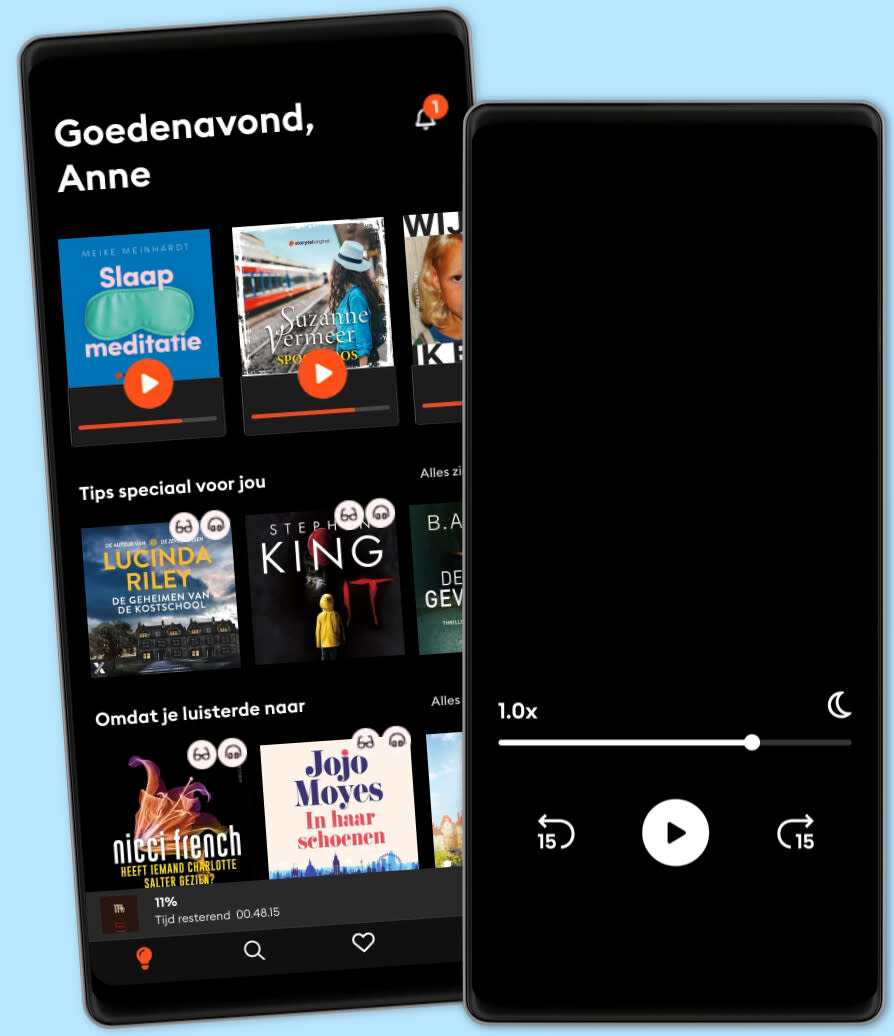Luisterboeken voor iedereen
Meer dan 1 miljoen luisterboeken en ebooks in één app. Ontdek Storytel nu.
- Switch makkelijk tussen luisteren en lezen
- Elke week honderden nieuwe verhalen
- Voor ieder een passend abonnement
- Opzeggen wanneer je maar wilt

Integrating Information into the Engineering Design Process
- Door
- Uitgever
- Serie
1 of 5
- Taal
- Engels
- Format
- Categorie
Non-fictie
Engineering design is a fundamental problem-solving model used by the discipline. Effective problem-solving requires the ability to find and incorporate quality information sources. To teach courses in this area effectively, educators need to understand the information needs of engineers and engineering students and their information gathering habits. This book provides essential guidance for engineering faculty and librarians wishing to better integrate information competencies into their curricular offerings. The treatment of the subject matter is pragmatic, accessible, and engaging. Rather than focusing on specific resources or interfaces, the book adopts a process-driven approach that outlasts changing information technologies. After several chapters introducing the conceptual underpinnings of the book, a sequence of shorter contributions go into more detail about specific steps in the design process and the information needs for those steps. While they are based on the latest research and theory, the emphasis of the chapters is on usable knowledge. Designed to be accessible, they also include illustrative examples drawn from specific engineering sub-disciplines to show how the core concepts can be applied in those situations. Part 1: Making the Case for Integrated Information in Engineering Design: Information Literary and Lifelong Learning (Michael Fosmire); Multiple Perspectives on Engineering Design (David Radcliffe); Ways that Engineers Use Design Information (Michael Fosmire); Ethical Information Use and Engineering (Megan Sapp Nelson); Information-Rich Engineering Design: A Model (David Radcliffe). Part 2: Pedagogical Advice on How to Implement in Courses: Build a Firm Foundation: Managing Project Information Effectively and Efficiently (Jon Jeffryes); Find the Real Need: Understanding the Task (Megan Sapp Nelson); Scout the Lay of the Land: Exploring the Broader Context of a Project (Amy Van Epps and Monica Cardella); Draw on Existing Knowledge: Taking Advantage of What is Already Known (Jim Clarke); Make Dependable Decisions: Using Trustworthy Information Wisely (Jeremy Garritano); Make It Real: Finding the Most Suitable Materials and Components (Jay Bhatt); Make It Safe and Legal: Meeting Standards, Codes, and Regulations (Bonnie Osif); Get Your Message Across: The Art of Sharing Information (Patrice Buzzanell and Carla Zoltowski); Reflect and Learn: Extracting New Design and Process Knowledge (David Radcliffe); Preparing Students to be Informed Designers: Assessing and Scaffolding Information Literacy (Senay Purzer and Ruth Wertz).
© 2014 Purdue University Press (Ebook): 9781612493084
Publicatiedatum
Ebook: 15 januari 2014
Anderen genoten ook van...
- CRYPTOCURRENCY FOR BEGINNERS: HOW TO GET STARTED AHMED MUSA
- Mental models: 9 Versatile Mental Models, Upgrade Your Thinking, Improve Your Decision Making, Productivity And How Clearly You See The World. Focus Your Efforts To Get The Best Advantage Melodie Ramsey
- Mental Models In A Nutshell: Practical Thinking Frameworks To Amplify Your Decision Making And Simplify Your Life Thinknetic
- Ultimate Data Engineering with Databricks Mayank Malhotra
- Information: A Historical Companion Paul Duguid
- The Best American Science and Nature Writing 2023 Carl Zimmer
- The War for Gaul: A New Translation Julius Caesar
- Ends.: Why we overlook endings for humans, products, services and digital. And why we shouldn’t. Joe Macleod
- Data Mesh: Comprehensive Guide on How to Become Truly Data-Driven Alex Campbell
- Data is Everybody's Business: The Fundamentals of Data Monetization (Management on the Cutting Edge) Cynthia M. Beath
- Dodelijk spoor (1) Barbara De Smedt
4.3
- De leraar: Deze les zal ze nooit meer vergeten... Freida McFadden
4.3
- Bechamel Mucho Dimitri Verhulst
4
- Het Pumpkin Spice Café: Het seizoen om verliefd te worden Laurie Gilmore
3.6
- It ends with us: Nooit meer is de Nederlandse uitgave van It Ends With Us Colleen Hoover
4.4
- Slaapmeditatie: 30 minuten meditatie voor ontspanning en slaap Meike Meinhardt
4.2
- Operatie T.O.I.L.E.T. Timon Verbeeck
4.7
- Het moois dat we delen Ish Ait Hamou
4.5
- Omringd door idioten: Beter communiceren met collega's, vrienden en familie Thomas Erikson
4.1
- Dodelijk spoor (2) Barbara De Smedt
4.2
- De hulp: Vanachter gesloten deuren ziet zij alles... Freida McFadden
4.4
- It starts with us: Vanaf nu is de Nederlandse uitgave van het vervolg op It Ends With Us Colleen Hoover
4.3
- Het eetcafé op de hoek Aline van Wijnen
4.3
- Hoe we onszelf graag kunnen zien: Over grenzen stellen, perfectionisme, people pleasing, zelfsabotage en ware veerkracht Onbespreekbaar
4.5
- Fourth Wing 1: In steen gebrand Rebecca Yarros
4.7
Maak je keuze:
Voor ieder een passend abonnement
Kies het aantal uur en accounts dat bij jou past
Download verhalen voor offline toegang
Kids Mode - een veilige omgeving voor kinderen
Unlimited
Voor wie onbeperkt wil luisteren en lezen.
1 account
Onbeperkte toegang
Meer dan 1 miljoen luisterboeken en ebooks
Altijd opzegbaar
Premium
Voor wie zo nu en dan wil luisteren en lezen.
1 account
30 uur/maand
Meer dan 1 miljoen luisterboeken en ebooks
Altijd opzegbaar
Flex
Voor wie Storytel wil proberen.
1 account
10 uur/30 dagen
Spaar ongebruikte uren op tot 50 uur
Meer dan 1 miljoen luisterboeken en ebooks
Altijd opzegbaar
Family
Voor wie verhalen met familie en vrienden wil delen.
2-3 accounts
Onbeperkte toegang
Meer dan 1 miljoen luisterboeken en ebooks
Altijd opzegbaar
2 accounts
€18.99 /30 dagenBeoordelingen
Algemene beoordeling
Nog geen beoordelingen
Download de app om deel te nemen aan het gesprek en beoordelingen toe te voegen.
Nederlands
België